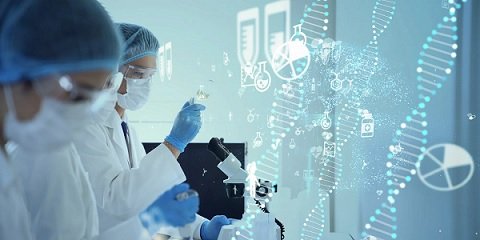Key Takeaways
- Life science innovations are transforming healthcare from diagnostics to treatment plans.
- Data-backed research supports the integration of these advanced solutions into healthcare systems.
- The main advantages are better patient outcomes and lower healthcare expenses.
Table of Contents
- Introduction
- Advancements in Diagnostics
- Precision Medicine
- Enhanced Patient Monitoring
- Cost Efficiency
- Keys to Successful Integration
- Conclusion
Introduction
Integrating life science solutions into healthcare systems marks a significant shift towards more personalized, efficient, and effective patient care. Utilizing innovations such as AI drug discovery, healthcare systems can rapidly discover and deploy advanced treatments. With the growing medical research and technology strides, healthcare systems can benefit from incorporating these advanced solutions.
Indeed, adopting life science solutions into everyday medical practices transforms hospitals and clinics’ operations. These advancements pave the way for earlier and more accurate diagnoses and innovative treatments that cater to each patient’s unique needs. The potential for improved patient outcomes through personalized medical care exemplifies the broader impacts these technologies can have on public health.
Advancements in Diagnostics
One significant area where life science has made a profound impact is diagnostics. Innovative diagnostic tools have revolutionized how diseases are detected and monitored, leading to earlier and more accurate diagnoses. According to a report, advancements in genomics and proteomics are paving the way for the early detection of complex conditions such as cancer.
These advancements are significant in the context of diseases that require timely intervention. For example, early cancer detection can lead to more successful treatment outcomes, as interventions can be started before the disease progresses. Moreover, non-invasive diagnostic tools reduce patient discomfort and increase compliance with medical recommendations, contributing to more diligent patient participation in their healthcare journey.
Precision Medicine
Another innovative result of incorporating life science ideas into healthcare is precision medicine. This method customizes medical care to each patient’s unique traits, frequently down to the genetic level. It has been demonstrated to enhance patient outcomes and considerably lessen adverse effects. Hospitals and clinics adopting precision medicine can provide more effective treatments explicitly tailored to their genetic makeup.
NIH Research Matters highlights the transformative potential of precision medicine in treating chronic diseases. For instance, patients with genetic predispositions to certain conditions can receive preventative treatments, reducing the likelihood of disease onset and progression. Precision medicine also makes it possible to design focused medications, which can be more beneficial than one-size-fits-all approaches in reducing side effects and enhancing patient quality of life.
Enhanced Patient Monitoring
Advanced patient monitoring systems are another area where life science technology makes enormous inroads. These systems can track vital signs in real time, enabling healthcare providers to respond faster and more effectively. Continuous monitoring systems can avert problems through early intervention and benefit patients with chronic diseases.
Wearable devices and remote monitoring have made monitoring patients’ health metrics easier without requiring frequent hospital visits. It enhances patient convenience and allows for better resource allocation within healthcare facilities. Constant observation facilitates the early detection of any health problems, enabling timely intervention and averting worsening. For example, automated insulin administration can help diabetics avoid hazardous blood sugar highs and lows by using real-time blood glucose monitoring.
Cost Efficiency
Integrating these advanced life science solutions also contributes to cost efficiency in healthcare. By reducing the need for invasive procedures and prolonged hospital stays through early and accurate diagnoses, healthcare systems can significantly cut down on costs. This cost-effectiveness ultimately makes advanced treatments accessible to a broader population.
For example, using AI in drug discovery can hasten the development of effective treatments, ensuring that patients receive appropriate care sooner. It can prevent serious health issues and reduce the need for costly emergency interventions. Additionally, healthcare healthcare systems can achieve better financial sustainability by streamlining operations and enhancing patient care through precise diagnostics and monitoring. Therefore, investing in life sciences is a long-term cost-saving measure, reducing the economic burden on healthcare providers and patients.
Keys to Successful Integration
Successful integration of life science solutions requires adherence to robust implementation strategies. Healthcare providers must upgrade their infrastructure and spend money on staff training to use these cutting-edge instruments. Additionally, compliance with regulatory standards ensures these technologies’ safe and effective deployment.
Collaboration between healthcare providers, technologists, and regulatory bodies is essential to integrate these innovations into existing healthcare frameworks seamlessly. Tailored training programs and continuous education can empower healthcare professionals to leverage life science solutions effectively. For instance, incorporating training sessions on AI-driven diagnostic tools can enhance their adoption and utility within clinical settings. A supportive regulatory environment is also critical in encouraging innovation while safeguarding patient safety.
Conclusion
Life science solutions encompass a broad spectrum of innovative technologies and ideas that have the potential to revolutionize the healthcare industry. These solutions offer numerous transformative benefits for healthcare systems, such as enhancing patient outcomes, improving cost efficiency, and driving advancements in diagnostics, precision medicine, and patient monitoring. Their impact on modern healthcare is unmistakable and signifies a significant shift in how healthcare is delivered and managed.
By integrating these state-of-the-art solutions into their practices, healthcare providers can effectively pave the way for a more efficient future tailored to each patient’s needs. The promise of these life science solutions lies in their ability to personalize and streamline healthcare, making it more responsive to each patient’s unique needs and requirements. As these advancements evolve, they are poised to become the cornerstone of modern medicine, contributing to a healthier, more sustainable future for patients and healthcare systems.
